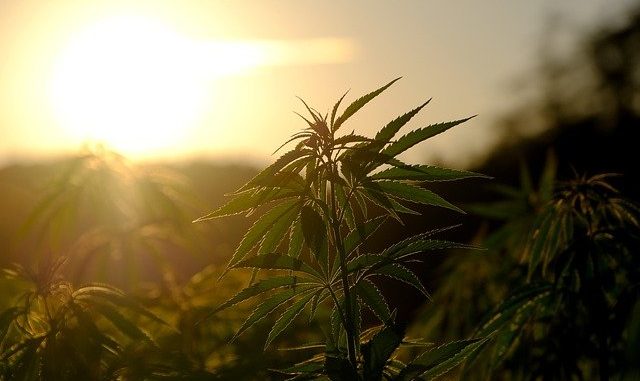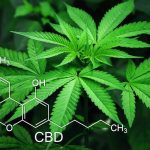
Canada has set the trend in recent years on regulation where cannabis products are concerned. It started in October 2018, it legalized the recreational use of cannabis and then exactly a year later legalized the use of cannabis edibles, topicals and concentrates.
Here, we focus on the edibles but understanding the production of cannabis products helps when interpreting the legal situation in Canada. Likewise, it is more than likely to be a model for how cannabis edibles are regulated by other countries in the not too distant future.
One key feature for the future is that the Canadian regulations are important because many other countries are trying to get to grips with balancing the use of cannabis products in foods and drinks and their own regulatory frameworks. In Canada, they have the Safe Foods for Canadians Act and Regulations which is a set of regulations for cannabis containing food products and deals specifically with these types of product. It does not have to cover non-cannabis food products which are covered in pre-existing regulation.
In the early days and certainly before 2018, the use of cannabis was mainly for medical use in Canada. After the 2018 legislation, the landscape changed considerably as classes of use became broader and restrictions on use were lifted.
Canadian Regulations On Cannabis
On October 17th, 2018, Canada enabled the Cannabis Act with various regulations and restrictions but essentially legalizing certain classes of cannabis. A year to that day, in 2019, amendments were produced which added new classes for cannabis.
The actual sale of cannabis and various derived products depends on the provinces in which these are sold. The reason it operates at a provincial level is because they have rights over the sale and marketing. The federal government however has overarching laws which cover approval of specific products.
The Food And Drugs Act shows limited applicability for edible foods but the Safe Foods For Canadians Act is entirely not applicable here unless claims are being made on a cannabis based drug for example.
The Cannabis Act And Regulations
The act concerns the regulation of growth, production and sale of legal recreational and medical cannabis. It also covers similar regulation etc. on research into cannabis.
In the beginning, the classes of cannabis covered were following: fresh and dried forms, oils, concentrates, plants and seeds. In 2019, new classes were added which covered off edibles, extracts which now includes concentrates, and topicals.
The Cannabis Act is not without its critics. The Canadian Chamber of Commerce set up an officially recognised body called the National Cannabis Working Group which is to review the Cannabis Act as it operates in Canada.
The intention is to understand how effective the act is and how the working group improves the framework. The Chamber of Commerce is assessing the economic legal implications of the industry with a view to making it all making more economic sense.
What Are The Marketing And Advertising Restrictions?
The Cannabis Act has a number of key restrictions which apply to the new classes allowed in 2019. There was to be no marketing to any young people and certainly no lifestyle adverting to the general public. That has proven to be problematic in its interpretation simply because there are so many outlets on social media for example where the message has become ragged and confused.
There are also restrictions in advertising so that the product cannot evoke any positive or negative emotions.
There can be no endorsement of the products. Likewise, it is obvious that sponsoring the product and writing testimonials would also be part of that regulation.
No health benefits can be made and with this too, no nutrient composition save for the sort of details that are needed on an ingredient list or a nutrition facts table. It also means other health claims made for a cannabis containing product are banned. So, making a low in fat claim for a bar containing cannabis is not permitted for example or that relieves stress let’s say.
There can be no association with alcohol or vaping products or offer cosmetic benefits too. Interestingly, particular flavours are restricted if they promote the product. This is designed to prevent inducement of children and teens into taking the product.
What is possible though is advertising which highlights a brand preference and advertising explaining and providing information is helpful and also permitted.
Creating Foods With Cannabis
In Canada the regulations are such that any foods that are sold must be shelf-stable when they contain cannabis. That rules out a host of other foods for example that might go in the freezer or on the chill cabinet. It also means that no meat, poultry or fish can contain cannabis as an ingredient unless for example it is an additive like gelatin which meets a food additive requirement. There is quite a specific requirement for the water activity of any designed food to be 0.85 whilst kept at a temperature of between 20 and 24 Centigrade or less. That seems rather unspecific in its qualification though.
Driving under the influence of drugs remains illegal so there is no recourse in law when it comes to excessive consumption of foods containing cannabis.
The Use Of Ingredients In Edible Cannabis Products
All the ingredients have to be shelf-stable simply because none of these foods can enter chill-chain or form part of a frozen food. The food cannot contain any other ingredients save for food and food additives. The additives cannot be altered either to contain cannabis.
You are permitted to add vitamins and minerals as long as an agreement is reached on this regarding the formulation. Ethanol is only allowed if it is a by-product and its concentration cannot exceed 0.5% by weight of the final product. Very often some ingredients are added which contain ethanol as a carryover.
One ingredient, caffeine sometimes presents issues and it is not permitted although it may be part of another ingredient like guarana for example. Even so the permitted level is only 30mg per serving.
The ingredient can contain flavouring agents in addition to one or more excipients which includes stabilizers, carriers and preservatives. There is no place for sweeteners, sugar or sweetening agents.
No ingredients prohibited ubnder the Tobacco and Vaping products Act such as caffeine, amino acids, vitamins and mineral. However, naturally occuring levels are permitted.
The ethanol level permitted is a maximum of 7.5 grams per container.
Packaging And Labelling Regulations
All cannabis products must be packaged in child-proof containers. The label must contain the standard cannabis symbol and a health warning message.
The specific product information must include the brand name, class of cannabis, ingredients declaration, allergens, best-before-date and intended use.
The levels of both THC and CBD are stated with actual contents and units of measure. There is an equivalency referenced in relation to the grams quantities of dried cannabis. Various reactions occur where some compounds will convert to THC. So, 10 grams of edible cannabis would equate to 20 grams of fried cannabis.
For edibles, seen from the perspectives of the regulations, the Food & Drug Regulations are a guidance for the development of the Cannabis Regulations.
There can be no copackaging with non-cannabis foods or copackaging of different classes in the same exterior container.
Pressurized packs are allowed as are multi-packs but the THC content must be compliant.
Facilities For Making Cannabis
There is a strict requirement that any facility used for making cannabis products must be isolated. It cannot be used for making other products. This is an extremely strict requirement and also includes a controlled environment and must have good security.
Security Clearance
A significant hurdle for businesses entering the Canadian environment are that any importers of food must follow the same guidelines as far as is understood.
Background checks will be conducted on suppliers.
In all the Canadian regulations have been far reaching and set the trend for many other countries to follow. It remains however as to how effective these have been.



Really useful to see this wisdom on a article.